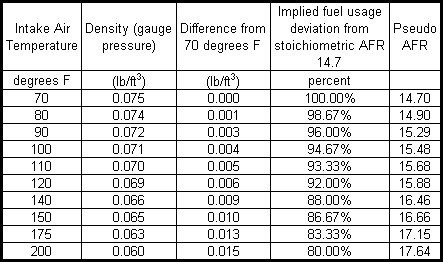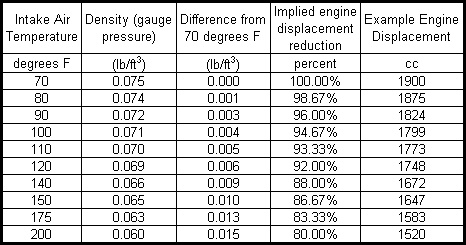California98Civic -
I tried to find a really good definition, but this is the best I could find :
Understanding air density and its effects
Quote:
If the air is in a balloon, heating it will expand the balloon, cooling it will cause the balloon to shrink as the molecules slow down. If the heated air is surrounded by nothing but air, it will push the surrounding air aside. As a result, the amount of air in a particular "box" decreases when the air is heated if the air is free to escape from the box. In the free atmosphere, the air's density decreases as the air is heated.
...
Pilots use charts or calculators to find out how temperature and air pressure at a particular time and place will affect the air's density and therefore aircraft performance. In general, these calculations don't take humidity into account since its affects are so much less than the others. When the air's density is low, airplanes need longer runways to take off and land and they don't climb as quickly as when the air's density is high.
Air density also affects the performance of automobiles, with lower density decreasing performance in the same way it decreases the performance of aircraft engines.
|
I went here to find air density as a function of temperature :
Air - Temperature, Pressure and Density
And came up with this :

When I say pseudo-AFR I think I am being misleading. Maybe a better way of saying it is that you are reducing the *displacement* of the engine by the percentage in the 4th column. The AFR stays the same from the 02 sensor POV. It's just that less oxygen and therefore less fuel is being burned per volume of air.
If what I am saying is correct, then this would give you an idea of the possible "change" in engine displacement at different intake temperatures :

BTW - I am not a car-guy either, so my statements are subject to correction by others.
CarloSW2